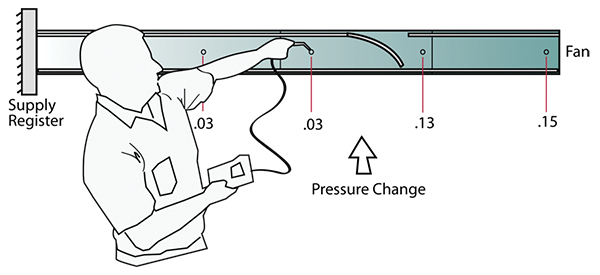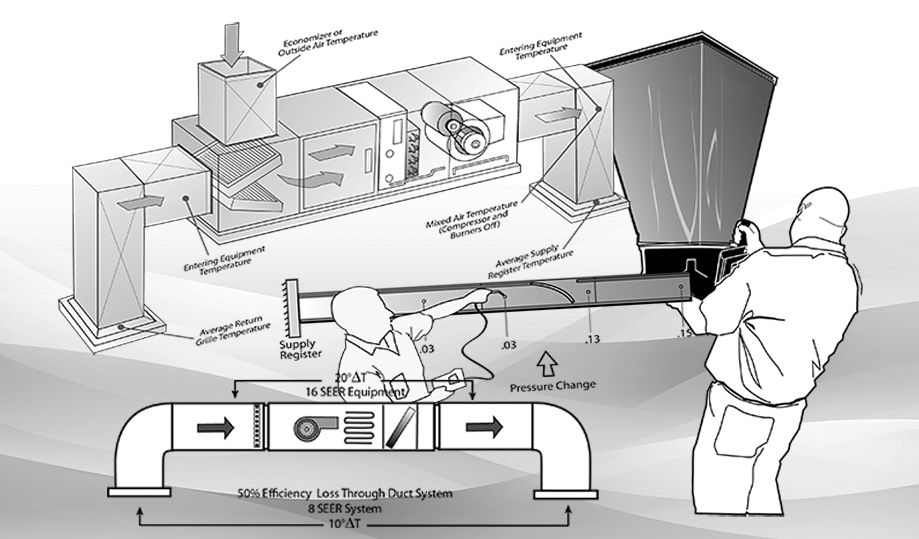Every High-Performance HVAC™ professional has been there: You’re troubleshooting an uncomfortable room and aren’t sure what to do next. You’ve measured and diagnosed static pressure, fan airflow, refrigerant charge, and equipment temperatures.
But now what? Nothing obvious stands out. It’s clear you need to move past the air moving equipment, but which direction should you go?
You have a wide variety of tests to choose from, so it’s easy to get lost in the options. Unless you know what you’re looking for and why, you could end up looking for answers to the wrong questions.
Let’s look at four air diagnostic tests that might get you out of a jam when trying to pinpoint the cause of a comfort problem.
Duct Pressure Profiling
Filter and coil testing results are often straightforward. They will let you know if a coil or filter is dirty or restricted. However, when you discover high static pressure readings on either or both sides of the duct system, it may leave you confused.
Is the entire duct system undersized or is there just a poor fitting or restriction? This is where duct pressure profiling comes in handy to help you locate the cause of those high pressures.
To perform this test, you’ll use the same manometer and accessories you used to measure static pressure. You also need a drill or impact driver to install test ports in the duct system (assuming the duct is accessible).
Start on the side of the duct system with the highest pressure. It’s the one most restrictive to airflow. If you’re testing the supply side of the duct system, start at the supply plenum and work down the supply trunk duct, towards the end. If you’re on the return side, start at the return drop or plenum, and work down the return trunk towards the return grille(s).
Install a test port every four feet downstream from your first test locations and then measure before proceeding. Look for suspect duct fittings like sharp transitions and turns. Drastic changes in duct pressure indicate excessive resistance to airflow.

Cluck Below for the Next Page:













Recent Comments